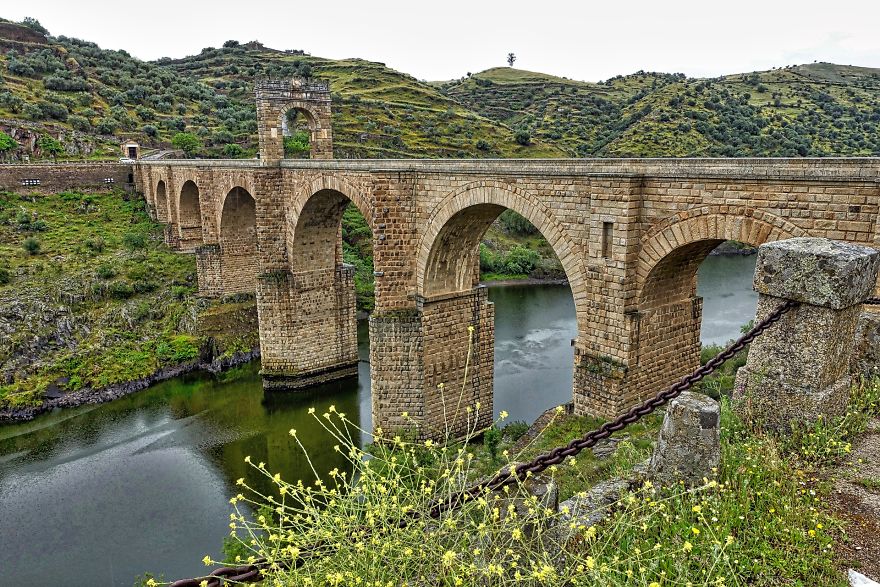The Resolve Of Roman Structures
The Romans were responsible for some of the most appalling acts in world history. They founded an empire on blood, slavery, ethnic cleansing and often worked through a tyrannical government. Their atrocities notwithstanding, the Romans were also great thinkers, tacticians and innovators, which this article will focus on. After all, the British empire have committed their fair share of godless acts and they surely should have known better. While the most famous remnants of roman life often come in the form of grand gladiator bouts in gargantuan arenas, there are still some structures that stand today and are even still in use. Following a brief science lesson (which I promise will be brief) are three roman built masterpieces that we still find use for today.
2,000 years on and many roman buildings still stand as strong as ever while our modern high-rises crumble within decades. You might have thought that overtime we get better at everything, but this isn’t the case. Damascus steel, for example, was used to make weaponry in ancient times and for all our scientific advancement we can’t figure out how to make it as the technique was lost. Unlike this steel, which evidence shows is no stronger or versatile than our own, the romans created a concrete that is superior to the material we use today. Modern concrete is cement based and relies on very extreme temperatures to create, attributing to 5% of c02 emissions, and expands over time and becomes weaker. Roman concrete, on the other hand, is rock based and uses volcanic ash, lime and sea water. This takes advantage of the chemical reaction that forms volcanic rock, actually making the material stronger over time!
The Alcantara Bridge
Built in 109 AD under the regime of Emperor Trajan, the alcantara bridge was constructed in spain as a means of crossing the Tagus river. The bridge relies on another roman innovation as several arches are in place supporting the structure. To think that the romans had no concept of cars it’s incredible that this bridge is widely used today. This is a testament to the earlier mentioned roman concrete. Several roman sites still stand underneath London, having survived bombs and fires throughout history.
Ponte Fabricio
An even older bridge, built in 69 AD, the ponte fabricio remains unchanged and serves thousands of romans each day. Although smaller, this is the oldest roman bridge located in rome and when you consider that it has needed no restoration when in constant use, compared to our own which seem to need maintenance every few years, you begin to wonder why we don’t revert to a rock based model.
Theatre of Marcellus
Unlike the former members of this list, the theatre of marcellus, located in rome has undergone some restoration. Originally an open-air theatre capable of seating 11,000-20,000 spectators, its upper floors have been converted into apartments while the support remains roman stone, allowing its residents to hang their hats on history.
More info: citycruises.com
The Romans were responsible for some of the most appalling acts in world history. They founded an empire on blood, slavery, ethnic cleansing and often worked through a tyrannical government. Their atrocities notwithstanding, the Romans were also great thinkers, tacticians and innovators, which this article will focus on. After all, the British empire have committed their fair share of godless acts and they surely should have known better. While the most famous remnants of roman life often come in the form of grand gladiator bouts in gargantuan arenas, there are still some structures that stand today and are even still in use. Following a brief science lesson (which I promise will be brief) are three roman built masterpieces that we still find use for today.
2,000 years on and many roman buildings still stand as strong as ever while our modern high-rises crumble within decades. You might have thought that overtime we get better at everything, but this isn’t the case. Damascus steel, for example, was used to make weaponry in ancient times and for all our scientific advancement we can’t figure out how to make it as the technique was lost. Unlike this steel, which evidence shows is no stronger or versatile than our own, the romans created a concrete that is superior to the material we use today. Modern concrete is cement based and relies on very extreme temperatures to create, attributing to 5% of c02 emissions, and expands over time and becomes weaker. Roman concrete, on the other hand, is rock based and uses volcanic ash, lime and sea water. This takes advantage of the chemical reaction that forms volcanic rock, actually making the material stronger over time!
The Alcantara Bridge
Built in 109 AD under the regime of Emperor Trajan, the alcantara bridge was constructed in spain as a means of crossing the Tagus river. The bridge relies on another roman innovation as several arches are in place supporting the structure. To think that the romans had no concept of cars it’s incredible that this bridge is widely used today. This is a testament to the earlier mentioned roman concrete. Several roman sites still stand underneath London, having survived bombs and fires throughout history.
Ponte Fabricio
An even older bridge, built in 69 AD, the ponte fabricio remains unchanged and serves thousands of romans each day. Although smaller, this is the oldest roman bridge located in rome and when you consider that it has needed no restoration when in constant use, compared to our own which seem to need maintenance every few years, you begin to wonder why we don’t revert to a rock based model.
Theatre of Marcellus
Unlike the former members of this list, the theatre of marcellus, located in rome has undergone some restoration. Originally an open-air theatre capable of seating 11,000-20,000 spectators, its upper floors have been converted into apartments while the support remains roman stone, allowing its residents to hang their hats on history.
More info: citycruises.com


4
0